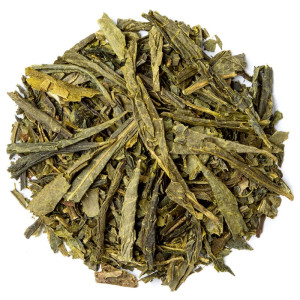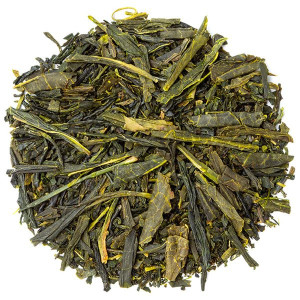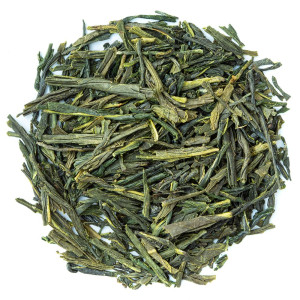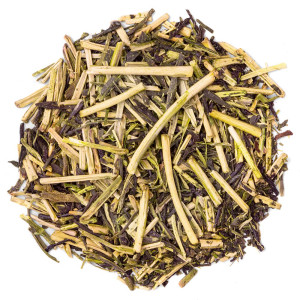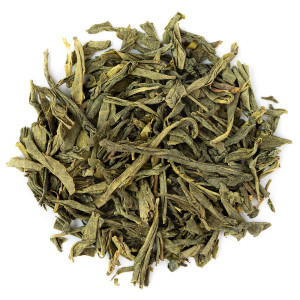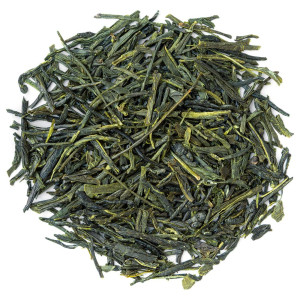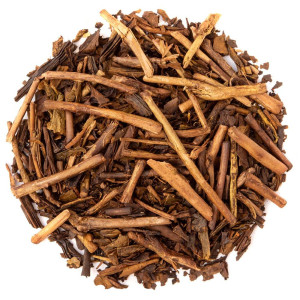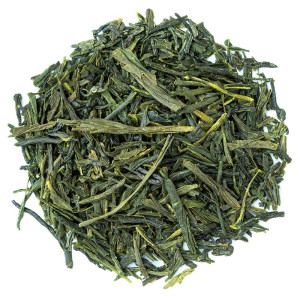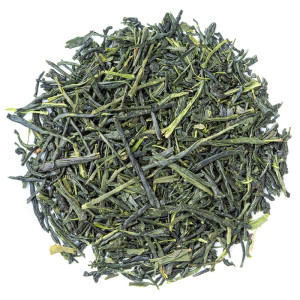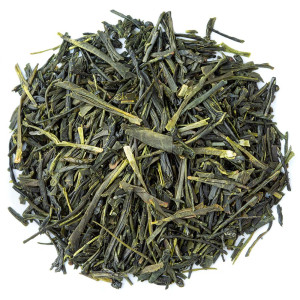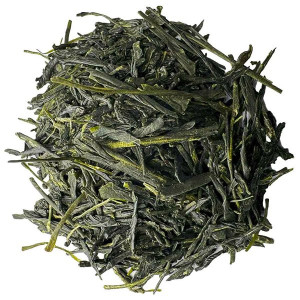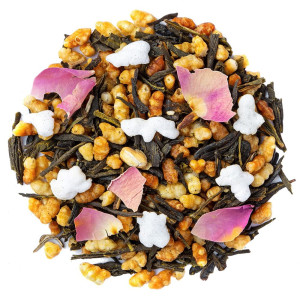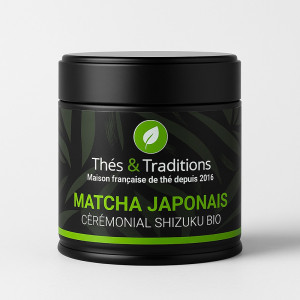Discover our other origin teas:
Japanese Tea
Japan is the second homeland of tea after China. While Japanese tea production is much smaller than that of China, the tea tradition is so deeply rooted in Japan that it's impossible to separate them. Japanese tea production consists exclusively of green tea, which comes in 9 main types. Japan cultivates the art of tea, which is why you find very complex teas revealing mostly very vegetal notes. We have gone out to unearth rare small organic plantations for you in order to offer the best Japanese teas.

Japanese tea: aromatic green teas
Japan produces almost exclusively green teas. Unlike Chinese green teas, Japanese teas have the particularity of being steam-heated. Japanese tea is therefore steamed, and the tea leaf undergoes no fermentation, it is simply dried. This centuries-old method gives Japanese tea unique aromas. Camellia Sinensis leaves are harvested 4 times a year, but the best Japanese teas come from the harvest that takes place between late March and mid-May. They are divided into 9 main types: Ryokucha, Sencha, Gyokuro, Matcha, Bancha, Houjicha, Genmaicha, Kugicha, Konbucha. They are characterized by a less bitter taste and a complex aromatic palette dominated by vegetal notes. You will also find some green teas flavored with jasmine, ginger, or adorned with delicate cherry blossoms.
High-end Japanese tea
Our selection of Japanese teas will allow you to appreciate the delicate flavor of these high-quality green teas. Sencha, for example, is a very mild Japanese green tea. It is the result of a long and rigorous manufacturing process that gives it a great finesse of taste. It is characterized by its needle-like shape due to the successive drying of its leaves. The kneading of the leaves before drying results in a tea that infuses quickly while having very low bitterness. Our Japanese genmaicha tea is a subtle blend of sencha tea and puffed rice grains that give the tea a delicate roasted hazelnut flavor. This Japanese tea has a particularly low theine content, which allows it to be consumed at any time of the day.

The tea culture in Japan
In the Land of the Rising Sun, tea is an integral part of the culture. It was introduced in the 8th century by Japanese monks who were the first to plant Camellia Sinensis on the archipelago. Immediately adopted in imitation of China, tea naturally entered Japanese life, eventually merging with Japanese culture from which it is now inseparable. The tea ceremony is a traditional Japanese art based on the preparation of Matcha tea. From the gestures to the accessories, the preparation of Japanese tea is codified down to the smallest detail. For the Japanese, it is more of a welcoming ritual than a ceremony in the sacred sense.
Japanese matcha tea or roasted Japanese tea
Matcha is primarily known for its numerous health benefits. This jade-colored tea powder is highly concentrated in theine, which gives it a stimulating effect similar to coffee. It is also rich in catechins and chlorophyll, which provide detoxifying and antioxidant properties. The ground Japanese powdered tea is traditionally used in the tea ceremony. It is prepared in a traditional bowl called Raku, using a large bamboo whisk, the Chasen. This tool is used to froth the matcha tea when mixing it with boiling water.
Succumb to the authentic flavors of our Japanese green teas
The most popular and prestigious Japanese teas are available in our catalog, much to the delight of green tea enthusiasts. Whether classic or organic, our teas will convince you with their quality and authenticity.
Discover our Ceremonial Matcha Hisui, a true culinary gem with a luminous jade color that is intensely relaxing. For a natural energy boost, also opt for our Japan Sencha Mizuki and Japan Premium Sencha Konomi teas with both gentle and powerful vegetal notes. Can't decide between Matcha and Sencha? Try our Sencha Matcha, a unique recipe combining the effects of these two Japanese green teas on your physical and mental well-being.
Also adopt our Organic Hojicha for your daytime and evening tea consumption. Roasted and grilled at high temperatures, this low-theine tea can be enjoyed with meals alongside your favorite sushi, cheeses, or desserts. Alternate with our Cherry Blossom green tea enriched with rose petals and spirulina for a hot beverage experience with a floral and delicately roasted aroma, thanks to the brown rice grains associated with this exclusive and addictive blend.
What are the daily benefits of Japanese tea?
Green tea is undeniably honored in Japan. Particularly rich in catechins, molecules from the flavonoid family whose main representative (epigallocatechin gallate or EGCG) is an excellent antioxidant for the body, green tea is full of benefits for Japanese people and other enthusiasts of traditional Japanese teas.
Thus, Japanese green tea actively fights premature cell aging thanks to the antioxidant action of catechins. These can also fight viruses, germs and bacteria, serving a better overall immune system.
In particular, Bancha, Gyokuro, Sencha and Matcha are Japanese green teas with high catechin content. Loose leaf and quality tea contains generally more than tea bags, hence the importance of choosing your daily hot drink carefully if you wish to fully benefit from the protective and healing properties of catechins.
Follow the guide to prepare a Japanese green tea concentrated in catechins! A perfect infusion indeed helps preserve the virtues of catechins and control the tea's bitterness. If steeped too long or made with water that's too hot, green tea can become too astringent and bitter for palates unaccustomed to tea tasting. You can bring your water to a boil, then let it cool for a few minutes until it reaches the ideal temperature, between 60 and 80°C, depending on the chosen tea. Then immerse your tea leaves in the cooled water and let steep according to the indicated time, between 1 and 3 minutes for Thés et Traditions Japanese teas. You're now ready to savor a green tea that's as mild as it is beneficial, during a wellness break at home or at work.
